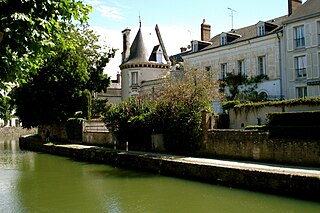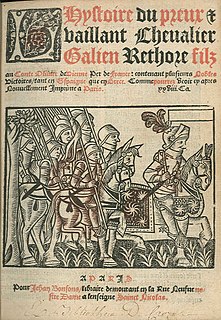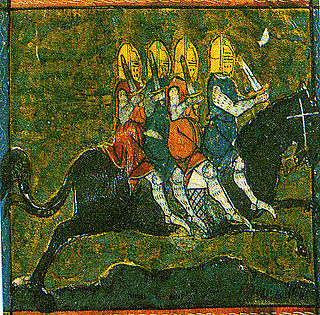The name "Macaire" appears to have several claims of origin. It was a male name and currently is considered a male or female name.
Macaire is a common name for a 12th-century French chanson de geste, named for one of its main characters.

France, officially the French Republic, is a country whose territory consists of metropolitan France in Western Europe and several overseas regions and territories. The metropolitan area of France extends from the Mediterranean Sea to the English Channel and the North Sea, and from the Rhine to the Atlantic Ocean. It is bordered by Belgium, Luxembourg and Germany to the northeast, Switzerland and Italy to the east, and Andorra and Spain to the south. The overseas territories include French Guiana in South America and several islands in the Atlantic, Pacific and Indian oceans. The country's 18 integral regions span a combined area of 643,801 square kilometres (248,573 sq mi) and a total population of 67.3 million. France, a sovereign state, is a unitary semi-presidential republic with its capital in Paris, the country's largest city and main cultural and commercial centre. Other major urban areas include Lyon, Marseille, Toulouse, Bordeaux, Lille and Nice.
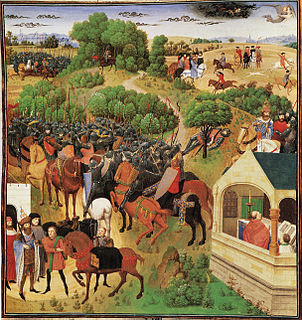
The chanson de geste is a medieval narrative, a type of epic poem that appears at the dawn of French literature. The earliest known poems of this genre date from the late eleventh and early twelfth centuries, before the emergence of the lyric poetry of the trouvères (troubadours) and the earliest verse romances. They reached their apogee in the period 1150–1250.
Macaire and La Reine Sibille (14th century) are two versions of the story of the false accusation brought against the queen of Charlemagne, called "Blanchefleur" in Macaire and "Sibille" in the later poem. Macaire is only preserved in the Franco-Venetian Geste of Charlemagne (Bibl. St Mark MS. fr. xiii.). La Reine Sibille only exists in fragments, but the tale is given in the chronicle of Alberic Trium Fontium, a monk of the Cistercian monastery of Trois Fontanes in the diocese of Chlons, and in a prose version. Macaire is the product of the fusion of two legends: that of the unjustly repudiated wife and that of the dog who detects the murderer of his master. For the former motive see Genevieve de Brabant. The second is found in Plutarch, Script. moral., ed. Didot ii. (1186), where a dog, like Aubri's hound, stayed three days without food by the body of its master, and subsequently attacked the murderers, thus leading to their discovery. The duel between Macaire and the dog is paralleled by an interpolation by Giraldus Cambrensis in a manuscript of the Hexameron of Ambrose. Aubri's hound received the name of the "dog of Montargis," because a representation of the story was painted on a chimney-piece in the chateau of Montargis in the 15th century.
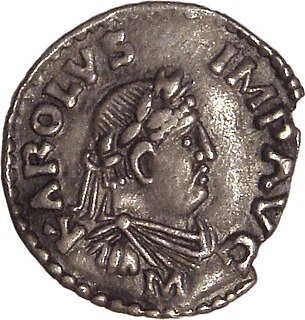
Charlemagne or Charles the Great, numbered Charles I, was King of the Franks from 768, King of the Lombards from 774, and Holy Roman Emperor from 800. He united much of western and central Europe during the Early Middle Ages. He was the first recognised emperor to rule from western Europe since the fall of the Western Roman Empire three centuries earlier. The expanded Frankish state that Charlemagne founded is called the Carolingian Empire. He was later canonized by Antipope Paschal III.

Venetian or Venetan is a Romance language spoken as a native language by almost four million people in the northeast of Italy, mostly in the Veneto region of Italy, where most of the five million inhabitants can understand it, centered in and around Venice, which carries the prestige dialect. It is sometimes spoken and often well understood outside Veneto, in Trentino, Friuli, Venezia Giulia, Istria, and some towns of Slovenia and Dalmatia (Croatia) by a surviving autochtonous population, and Brazil, Argentina and Mexico by diasporans.
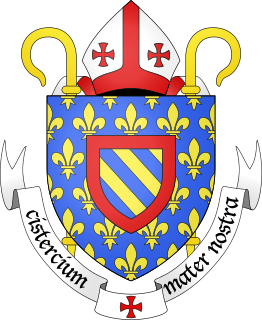
The Cistercians, officially the Order of Cistercians, are a Catholic religious order of monks and nuns that branched off from the Benedictines and follow the Rule of Saint Benedict. They are also known as Bernardines, after the highly influential St. Bernard of Clairvaux ; or as White Monks, in reference to the colour of the "cuccula" or white choir robe worn by the Cistercians over their habits, as opposed to the black cuccula worn by Benedictine monks.
The tale was early divorced from Carolingian tradition, and Jean de la Taille, in his Discours notable des duels (Paris, 1607), places the incident under Charles V.
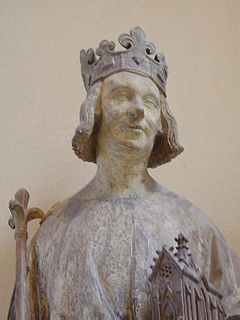
Charles V, called "the Wise", was King of France from 1364 to his death, the third from the House of Valois. His reign marked a high point for France during the Hundred Years' War, with his armies recovering much of the territory held by the English, and successfully reversed the military losses of his predecessors.



